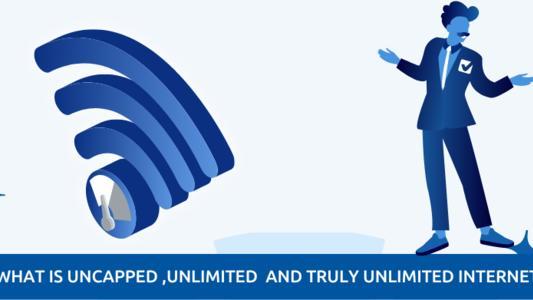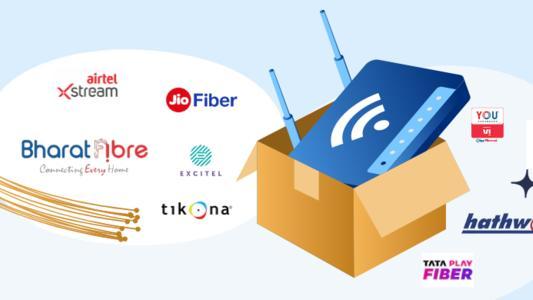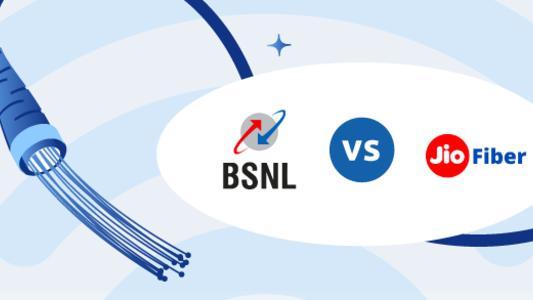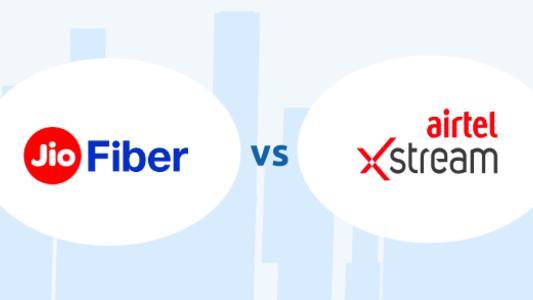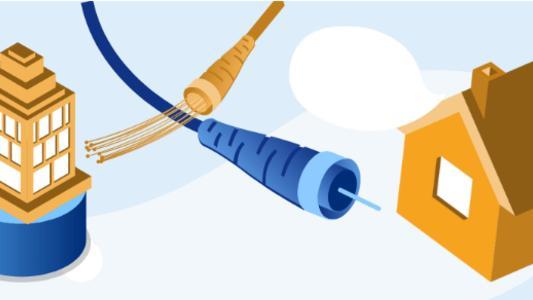FTTH Vs FTTN: The Preferred Fiber Transport Technique
In the digital age, there are a variety of methods for delivering the signal to your home, including numerous cables and connections, as well as airborne transmissions from space, though this is becoming less and less frequent with each passing day. Copper wire and fiber optics are the most widely used transmission technologies.
If you are connected to a fiber-optic network, this does not necessarily imply that your connection is sent entirely over fiber optics all the way to your house. In other instances, the signal travels the majority of the distance before being converted to a different medium for ultimate transmission. Let us take a look at the two most prevalent fiber transport techniques, as well as the advantages and disadvantages of each.
What Is FTTN?
FTTN is the least expensive and most efficient method of delivering high-speed Internet to homes since the fiber terminates a great distance away from the premises. The full-form of FTTN is Fiber to the node or neighborhood.
But, what is FTTN? A node is a connecting hub that is located near a neighborhood, although the distance between your house and the node might be as far as a mile. Although the signal entering the node is conveyed over fiber optic cable, after it leaves the node and goes to your neighborhood – and finally, to your house – it is sent through copper wire.
The major disadvantage of the FTTN network is that it may result in a significant loss of signal from the node to your computer since copper is incapable of carrying the bandwidth or transmitting signals at the speeds and dependability of fiber optics over long distances.
The longer the distance between the node and the residence, the bigger the magnitude of the signal loss. As good as a pure copper connection is, the conversion from copper to fiber negates the point of having a fiber network when the final long-distance link is copper.
Pros of FTTN
- The price of installation is shared between other users in your region who share the same node, making FTTN more cost-effective when compared to fiber-to-the-home (FTTH).
- It paves the way for future upgrades of "last mile" fibre optics from the node to individual dwellings.
- Users who are within one mile of the installation location will be able to connect to the internet.
- If any kind of damage happens, it is simple to identify and fix.
Cons of FTTN
- The "final mile" of copper wire serves as a bottleneck, slowing down transmission rates.
- There is a bad speed-to-price ratio with the FTTN service.
- The internet speeds are equivalent to those of cable internet.
- When it comes to data rates, the distance between the consumer and the node is important.
What Is FTTH?
The majority of fiber optic internet service providers operate under the FTTH paradigm, which is virtually entirely fiber from beginning to finish, with the exception of the last few feet. The full form of FTTH is the Fiber-to-the-Home. If the building is a single-family residence or a complex, such as an apartment or condominium complex, this connection utilizes fiber all the way to the exterior of the building.
The fiber finishes at this point and connects to copper wires that go through the router. Like any fiber-to-copper link, the transition reduces speed and bandwidth a little, although the short distance has less effect on performance than longer copper connections. You can learn more about FTTH in our guide here.
Pros of FTTH
- Faster than 1 Gbps, fiber optic cable is capable of providing "Gigabit" internet service (1,000 Mbps).
- The weather has no effect on the internet connection's performance.
- It is more valuable to have FTTH installed on your property than it is to not have it.
- It is termed "future-proof" since it does not need any cable changes in the future.
Cons of FTTH
- IThe first installation costs a lot of money.
Comparison Between FTTN and FTTH
FTTN Vs FTTH: Structure
Fiber optic cable is used to transmit the connection in the case of FTTN and FTTH systems. Fiber optic cables are made of glass or plastic, and they are used to transfer modulated light and digital information across vast distances using fiber optic technology. The terms "FTTN" and "FTTH" refer to broadband fibers that are both excellent for people and companies seeking direct internet connection.
Although the structure of broadband fiber renders it superior to coax cable, there is a possibility of downtime, particularly in the case of FTTN internet, when the internet is distributed by a neighborhood. The download and upload speeds are subject to change. However, FTTH provides much faster download and upload rates than DSL or cable Internet.
FTTN Vs FTTH: Availability
Due to the straightforward nature of cable internet, it is readily available and accessible practically everywhere in India. The availability of fiber-optic transmission lines (FTTH and FTTN) has increased throughout the years, but there is still a long way to go. This is partly due to the high expenses of infrastructure, which most people are unwilling to bear.
FTTN Vs FTTH: Reliability
When comparing the two internet alternatives, FTTH is the more dependable since it is not influenced by weather or distance as much as cable or FTTN. FTTH takes full advantage of fiber optic technology, as opposed to FTTN, which is considered a short-term solution to the deficiencies of cable infrastructure.
If you live in a remote region or in a province where cable disruptions and electrical outages are prevalent due to inclement weather, cable internet may not be the most dependable internet connection for you.
FTTN Vs FTTH: Speed
| Type | Download | Upload |
|---|---|---|
| FTTN | 50 to 100 Mbps | 50 to 100 Mbps |
| FTTH | 150 to 1,000+ Mbps | 150 to 1,000+ Mbps |
- FTTH depends on the usage of others on the network.
- FTTN depends on proximity to the fiber optic node.
FTTN Vs FTTH: Cost
However, although the cost of FTTH and FTTN is substantial, they are no longer nearly as costly as they were in the past. Nonetheless, they are still not as inexpensive as cable. The cost of cable internet is determined by the location, television package, and phone services selected. Purchasing a bundle that includes both internet and television service is a simple and effective method to save money.
For FTTN and FTTH, the cost is determined by the speed you require, your location, and your consumption patterns. You will very certainly be required to pay for installation and activation as well. FTTN is less costly than FTTH since the cost is spread between the houses in the neighborhood, as opposed to FTTH, where one family pays the whole cost.
When it comes to FTTN and FTTH, there’s no doubt that FTTH takes a higher precedence. With the deployment of FTTH networks by network service providers, it is just a matter of time until FTTH becomes widely available. For more updates about the latest technologies provided by internet service providers, keep reading Selectra!
